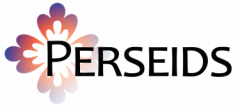Perseids Used in Lyon
On October 10, 2014, Perseids was used by a class of Master’s students from the universities of Lyon to edit Greek inscriptions. The Perseids team traveled to Lyon as part of the Visible Worlds Project, “Research and Training in Digital Contextual Epigraphy”. This project funded by the Partner University Fund program and the Andrew W. Mellon Foundation aims to advance research and to train researchers in the application of digital technologies to the study of ancient inscriptions.Digitally-enabled research and digital publications promote an entire reappraisal of inscriptions, giving the ability to deal with these documents at the same time as texts and images, considering at once the work of art as well as the visual and verbal message, setting them in their visual environment as performative communication strategies. The project involves graduate-student and faculty exchanges between Brown University, Tufts University, and the Université Lyon II, as well as two three-week field workshops in Greece (in 2015) and Cambodia (in 2016). The Visible Worlds team is composed of Michèle Brunet (principal investigator, Lyon II), John Bodel (principal investigator, Brown University), Arlo Griffiths (École Française d’Extrême-Orient), and Marie-Claire Beaulieu (Tufts University). They were joined for this workshop by Bridget Almas (Perseids-Perseus Digital Library), Thibault Clerice (Leipzig Open Philology Project/Perseids), and Emmanuelle Morlock (Laboratoire Hisoma-CNRS).
The Lyon workshop was intended to introduce Professor Brunet’s students to Perseids, which they will continue to use throughout the term and throughout the Visible Worlds project. The workshop was also intended to train three graduate students who will serve as mentors, training other students to the use of Perseids. This work will ultimately lead to the field session to be held in Greece in May 2015, which will deal with prosopography and the study of inscriptions in their archaeological context. In the course of the field session, Perseids will be used to edit and translate epigraphical texts, align translations, treebank the texts, annotate named entities, conduct peer-review, and disseminate online publications.
The Lyon workshop was successful in introducing students to these tasks. In accordance with the team’s pedagogical approach, students started using Perseids right away, performing tasks as soon as they had been demonstrated. Within minutes, students could see the result of their work by using the “preview” screen available in Perseids. Students expressed enthusiasm at the idea of participating in the elaboration of new epigraphical collections.


